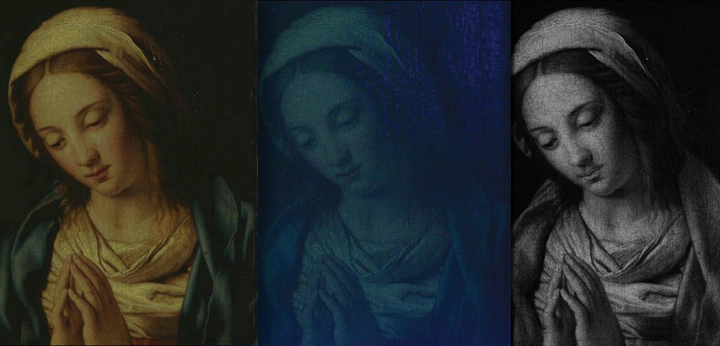Global mapping of stratigraphy of an old-master painting using sparsity-based terahertz reflectometry

Abstract
The process by which art paintings are produced typically involves the successive applications of preparatory and paint layers to a canvas or other support; however, there is an absence of nondestructive modalities to provide a global mapping of the stratigraphy, information that is crucial for evaluation of its authenticity and attribution, for insights into historical or artist-specific techniques, as well as for conservation. We demonstrate sparsity-based terahertz reflectometry can be applied to extract a detailed 3D mapping of the layer structure of the 17th century easel painting Madonna in Preghiera by the workshop of Giovanni Battista Salvi da Sassoferrato, in which the structure of the canvas support, the ground, imprimatura, underpainting, pictorial, and varnish layers are identified quantitatively. In addition, a hitherto unidentified restoration of the varnish has been found. Our approach unlocks the full promise of terahertz reflectometry to provide a global and detailed account of an easel painting’s stratigraphy by exploiting the sparse deconvolution, without which terahertz reflectometry in the past has only provided a meager tool for the characterization of paintings with paint-layer thicknesses smaller than 50 μm. The proposed modality can also be employed across a broad range of applications in nondestructive testing and biomedical imaging.